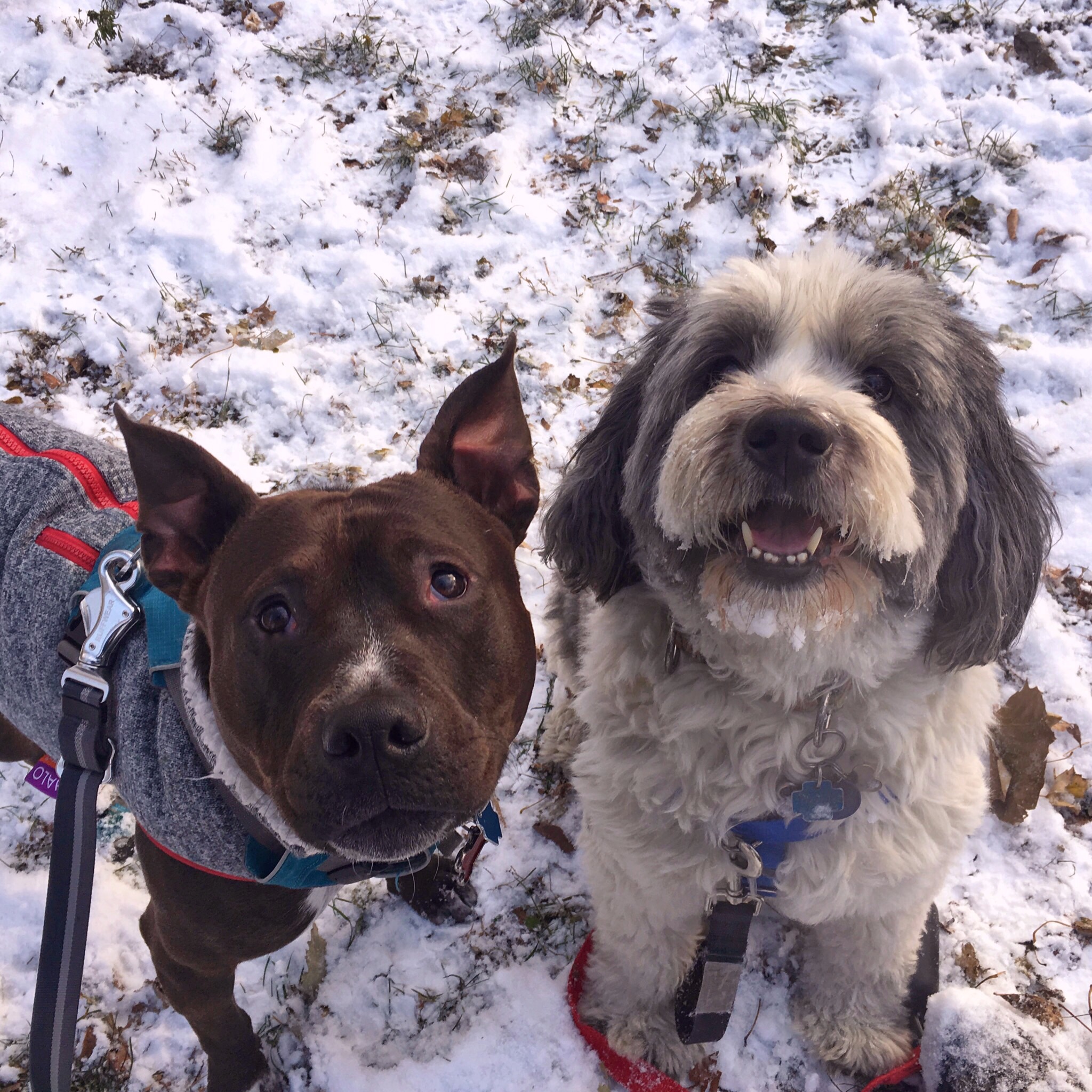Some dogs have a thick fur that keeps them warm, but those with thin coats may need to wear a sweater or coat when going outside. A good coat should reach from the neck to the base of the tail and also protect the belly. But remember that coats will not prevent frostbite on the ears, feet or tail … so even with a cozy coat, don’t keep your short haired dog out too long in freezing temperatures. Also, never shave your dog down to the skin during the winter, as a longer coat will provide more warmth. If your dog is long-haired, simply trim the hair to minimize the clinging ice balls, salt crystals and de-icing chemicals that can dry their skin, and don’t neglect the hair between his toes.
Bathe your pets as little as possible during the winter. Washing them too often can remove essential oils and increase the chance of developing dry, flaky skin. A moisturizing shampoo can be a good option, and consider adding a skin and coat supplement to their food such as fish oils (ask your veterinarian for suggestions regarding supplements). Dogs can also easily dehydrate during the winter, so be sure that they have easy access to a water bowl throughout the day.
One of the biggest discomforts your pet will experience in the winter is snow and salt getting in their paws. Definitely use some pet booties/shoes if they tolerate them. If they don’t, always check their paws for snow, ice, salt, or any other ice-melting chemical agents and remove them from their paws immediately after their walk. Another option is using petroleum jelly or other paw protectants. Also, don’t forget keeping the hair between their paw pads nice and trimmed. Longer hair will tend to hold on to more salt, ice and chemical agents.
If possible, try walking them in the late morning or early afternoon hours when temperatures are a little warmer, and avoid early morning or late evening walks. Spend time playing outdoors while it’s sunny as sunshine brings the added benefit of providing both you and your pet with vitamin D.
For older pets, cold weather can aggravate existing medical conditions, particularly arthritis. It’s very important to maintain an exercise regimen with your arthritic dog, but be mindful of slippery surfaces and make sure your dog has a warm soft rest area.
Most importantly, don’t forget that winter cuddles with your pet are a great way for everybody to stay warm!
~TheK9PT
Dr. Francisco Maia, PT, DPT, CCRT
